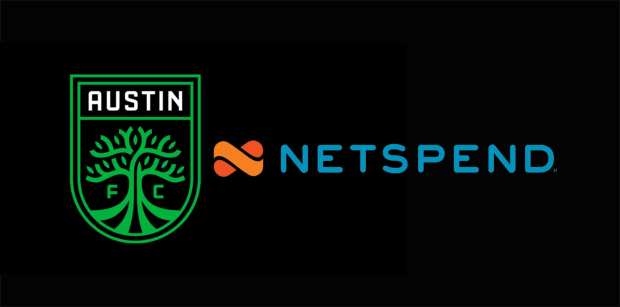Netspend CEO On Making The B2B Pivot

Changing course isn’t an easy thing for businesses to do, particularly when it’s a big change like shifting focus from providing services direct to consumer (D2C) to taking on a B2B model.
But for prepaid debit card firm Netspend — which spent much of the past year making just such a transition — the challenge wasn’t as much a matter of changing technology as it was of changing the company’s mindset.
“The honest answer is it’s an evolution,” Netspend President Kelley Knutson told Karen Webster. “When you’ve got a legacy business that’s so used to going directly to the consumer and to a specific segment of the consumer, you build your operating model around that.”
“The good news for Netspend is that we have a single technology platform [and] we’ve broken that down into different [software development kits] SDKs and [application programming interfaces] APIs and were already integrated heavily with our partners,” Knutson said.] “So that forced me to step back and ask, ‘Why are we making this so hard for ourselves?’”
NetSpend isn’t giving up its business of serving consumers. Creating financial access for the unbanked and underbanked through prepaid cards remains a corporate priority.
But what the company has increasingly come to realize is that it doesn’t need to own the consumer relationship. Instead, Netspend’s core strength is in the provisioning of financial services like cards, mobile wallets and the compliant and secure movement of money.
That’s a skill Knutson said Netspend decided it could best apply to creating collaborative relationships with a growing world of branded ecosystems that need exactly those types of offerings for their customers.
He said those ecosystems are mainly focused with owning the engagement and interaction with the customer, which means they want payments and onboarding capability but don’t want to be program managers. Knutson said they’re not interested in managing risk and they “really, really don’t want to deal with a lot of the regulatory and compliance issues” that go hand in hand with the provision of financial services.
At the same time, he said Netspend can reliably do all of that with its built-to-scale technology platform. But Knutson said the company is happy to hand over the front-end consumer interaction and life-cycle marketing activities to partner brands.
He said what Netspend realized when it took a step back is that B2B offered a unique opportunity to expand and broaden the company’s reach by going along for the digital expansion ride from the back seat instead of insisting to be the driver.
A New Partnership In Major League Soccer
Netspend’s latest deal is with Austin FC, the new Major League Soccer team coming to Austin, Texas.
The deal will see the team put out a traditional branded Austin FC card that will be distributed through the Netspend network. But Knutson said that more importantly, the company will build capabilities into the club’s app like mobile wallets to more fully enable in-stadium cashless and contactless payments.
He said that what the club is hoping to do is really start building new consumer behaviors for both safety and convenience reasons when fans return to events in the stadium. Beyond that, the club is looking to build loyalty and repeat usage of its app, and embedded financial services capabilities are critical to that.
“What they’d like to do is also extend that to people who maybe can’t enjoy [the] in-stadium experience but have a loyalty to the brand and are looking to leverage these capacities beyond the stadium environment,” Knutson said. “They really believe in convenience [and] speed of usage, and a lot of it’s around loyalty to their brand and this feeling of community.”
Lots Of Opportunities Across Other Verticals
As Netspend continues to build out its B2B business, the company is seeing similar partnership opportunities springing up across multiple verticals.
For example, there’s an opportunity in the restaurant space to fix the payout of tips so that waitstaff can digitally true-up on tips every hour. There are also opportunities in healthcare, where finding better methods for managing the flow of funds has become critical.
Knutson said there’s also the world of education, which has seen incredible spikes of interest in both K-12 and university ecosystems. For instance, he said Netspend wants to combine lunch vouchers, ID cards and embedded wallets that “allow usage within that ecosystem, [but] allow parents to control some of that spending behavior and monitor that as well.”
Staying The Same While Changing
However, Knutson said that Netspend’s expansion into B2B is not a complete pivot away from its consumer business.
The firm continues to care for its core customer set of underbanked, underserved customers. In fact, Knutson said that if anything, the pandemic has put a lot of pressure on that part of the business. For example, Netspend had to scramble to process billions of dollars of U.S. government stimulus payments as they rolled in, mostly over a matter of about three days.
But what Netspend has found is that it is better able to serve consumers across ecosystems, as the firm is willing to step into the background and take on the fragmented vendor management nightmare that these ecosystems are cobbling together.
“I think there used to be a view that we needed to own that customer across all of their transactional behavior, [but] I don’t think we view it that way any longer,” Knutson said. “There are certain customers we’re going to try to do that for with some of our own brands, but the reality is that we’d like it when our customers play in different ecosystems and can move funds on our platform. And so, we’re more than happy to pivot in that direction, but still take care of our core underbanked, underserved customer with better propositions.”
